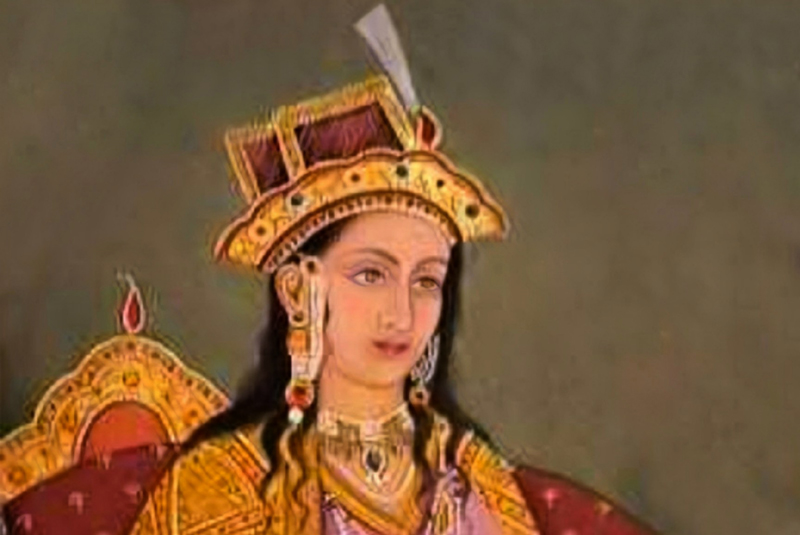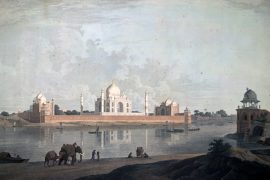Magnificently opulent, overflowing with the sheen of luxurious fabrics and intricately carved marble and stone intarsia, painted stucco and tilework the Mughal palaces bewitched visitors from far and wide. Asif Karim’s 1960s epic film Mughal-e-Azam captured the grandeur of this imperial era and popular imagination; dramatic not only in its visuals of royal life, but the fictional story of the Mughal emperor Akbhar and his wayward son Salim–who much to the senior ruler’s chagrin falls in love with a courtesan and wages war against his father’s high handedness. Hidden, however, is the untold story is of Akbhar’s wife Maryam-uz-zamani (popularly but inaccurately known as Jodha bai) and many other women that lived before and after her.
Maryam-uz-zamani was the daughter of a Hindu king, Raja Bihari Mall Kachhwaha; her nuptials to the Mughal king a strategic and political alliance. Far from her Bollywood stereotype as a doe eyed beauty applauded for bringing vegetarian meals to the Mughal durbar she was a prolific international trader. Historians estimate that at the time of her death she was one of the wealthiest Mughal women, and that the, ‘large scale and structured nature of this business suggests women had been developing these investments for a long time, from the period of Akbar.’ Such was the prominence of royal Mughal women in the economy that by one estimate, “there is no doubt that Mughal noblewomen held much of the empire’s wealth, but the actual amount or even percentage, of that wealth is difficult to determine.”
Women traded goods such as spices, silks, cottons and luxury textiles, in high demand in the West and imported gold, silver, ivory, pearls, amber, perfumes and wines. One of most famous events documented, the capture by the Portuguese of Maryam-uz-zamani’s ship, the Rahimi, yields extraordinary insights into the power and influence of its owner. The largest ship in the world was returning from Europe with its passengers and gold and silver received for goods. It’s capture and plunder caused an uproar in the Mughal court; the intolerable insult to the mother of the reigning emperor Jahangir soliciting a ferocious attack on trade with the Portuguese.
-30-
Copyright©Madras Courier, All Rights Reserved. You may share using our article tools. Please don't cut articles from madrascourier.com and redistribute by email, post to the web, mobile phone or social media.Please send in your feed back and comments to [email protected]











